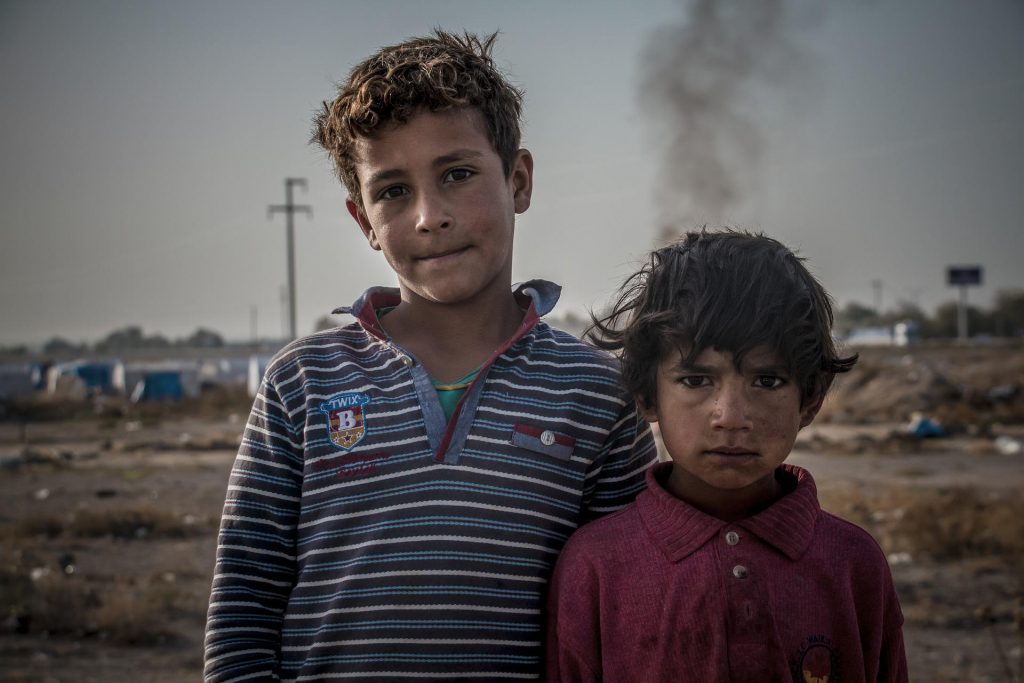Suffer the Little Children to Come Unto Me

Worldwide the number of displaced people has reached unprecedented heights with over 65.6 million people displaced from their places of habitual residence. Over 40% of those of displaced persons around the world are children. As of 2017, there are close to 23 million refugees around the world and over 50% of refugees are children under the age of 18. In countries where conflict uproots populations, children are often severely impacted due to their greater vulnerability, according to the United Nations High Commissioner for Refugees.
Many migrant children and families arrive with extensive histories of trauma and loss and face additional stressors in. In most instances, these migrants arrive without warning and overwhelm the systems of care of the host country. Reception services are often focused on meeting the basic needs of these refugees such as food and shelter. Mental health needs are not addressed when migrant children arrive unless the person is in such acute distress that they cannot function without receiving care. This oversight is problematic because the migration experience makes mental health one of the key issues that must be addressed to support the successful integration of migrant children into the host communities. This is especially true of refugee children who have a higher prevalence of both exposures to traumatic events and higher levels of mental health symptoms such as posttraumatic stress disorder (PTSD) and depression compared to the general population.
The migration experience is often said to involve three distinct stages: pre-migration, during migration, and post-migration. Migrant children often face multiple stressors in each of these stages, and their mental health status is impacted by levels of stress experienced during these different stages of migration. In their country of birth, children might see family members killed or attacked. They are forced to leave all they know behind and undertake dangerous and uncertain journeys.
Once they arrive in the country of asylum, migrant children often face new stressors, including community violence and xenophobia, the stress of adapting to a new culture and language, inappropriate placement in school, and the stress of uncertain status and potential deportation. The stress related to legal status is especially cruel, as it means that the sense of accomplishment for arriving in the desired destination is replaced by the fear the family might now face a long road to achieving permanent legal status. The threat of being rejected and removed creates additional traumas and worse outcomes for migrant children.
In addition to the fear of being deported, migrant children face other traumas in resettlement as their families are often resettled in high-crime areas where they are exposed to community violence and where they often face discrimination and harassment. These experiences could lead to youth experiencing higher levels of mental health distress. Research has shown that refugee and migrant children, especially those from conflict zones, experience higher levels of trauma than native-born children and migrant children are at risk for a higher prevalence of mental health disorders such as PTSD. Research shows that young refugees have experienced, on average, 7.7 traumatic events and that one in three refugee youth sampled met the full criteria for PTSD.

Despite the higher trauma exposure and the presence of mental health needs, immigrant and refugee children are less likely to access mental health services and to face greater barriers to care than native-born children. In some instances, mental health services are not available or are not accessible due to factors that are beyond the caregiver’s control, but migrant children often do not access mental health services even when they are available. Multiple barriers to mental health care have been identified, including stigma attached to mental illness, lack of culturally and linguistically appropriate services, as well as the primacy of basic needs such as housing and employment that families struggle to secure in their new home.
The lack of culturally and linguistically accessible services has been cited as one of the primary barriers to care for refugees and often, due to culturally different beliefs and understandings around psychological stress, migrant families may have a different explanation for a child’s symptoms and may not trust the help offered by providers. Furthermore, providers often lack the cultural and linguistic resources to explain diagnoses and treatment in a culturally relevant way. Additionally, parents might not wish to have the stigma of mental illness associated with their children whose safety and survival was the motivating force for their undertaking a dangerous journey. Moreover, migrant families might prioritize everyday needs over mental health needs as they strive to build a new life in a new country. This primacy of concrete needs has been identified as one of the key barriers that could prevent refugees and other migrants from seeking help for mental health symptoms that may not be seen as a priority compared to the urgency of meeting basic needs, and this continues to be the case even when mental health symptoms may be interfering with achieving resettlement goals. Finally, families might not be able to identify the mental health needs as easily as they are able to identify the challenges of resettlement.
Even when a refugee is exhibiting mental health symptoms such as depression or PTSD, he or she often refuses to slow down for mental health counselling or to seek help for these symptoms. Often when a refugee is referred to a mental health provider and is offered counselling to help with symptoms, the response might be “my symptoms will get better once I secure (put here any concrete need such as housing/good job/good school/family reunification.” Clinicians are often told, “Talking will not help me but if you help me with those things, I will feel better.” The migrant is focused on obtaining basic material necessities and re-establishing normal life as soon as possible; they do not wish to talk about “problems” she or he perceives as unhelpful rumination on bad things that happened in the past and cannot be changed. The presenting symptoms are often perceived as transitory and attributed to current stressors rather than a history of trauma and loss. Of course, both are often contributing factors. The current stressors exasperate the symptoms that may be due to past traumas and tasks that are key to success in the host country may be impeded by past traumatic experiences increasing stress and symptoms. Nevertheless, it is hard to engage migrants in mental health services without addressing their concrete needs.
Experts in refugee and migrant mental health have identified key characteristics that a successful mental health intervention for this population must contain. For example, services for refugee youth should be comprehensive, culturally relevant, and community based as well as use practice-based evidence with evidence-based practices. The Interagency Standing Committee (IASC) of United Nations and other humanitarian organizations endorse a stepwise pyramid approach that focuses on helping families and children secure basic necessities and then work toward higher-level mental health support services. This represents an ideal model for working with refugees and others displaced by conflict or violence: to be effective, mental health interventions must pay attention to the linguistic and cultural needs of the community served; they must also be holistic, address needs beyond what is traditionally considered mental health, and be in partnership with the community being served.
Reference: Abidi, Saida. (2018). Mental Health of Migrant Children: Oxford Research Encyclopedias, Global Public Health. Department of Social Work, Boston University and Department of Psychiatry, Children’s Hospital Boston. Pages 1 -10.

